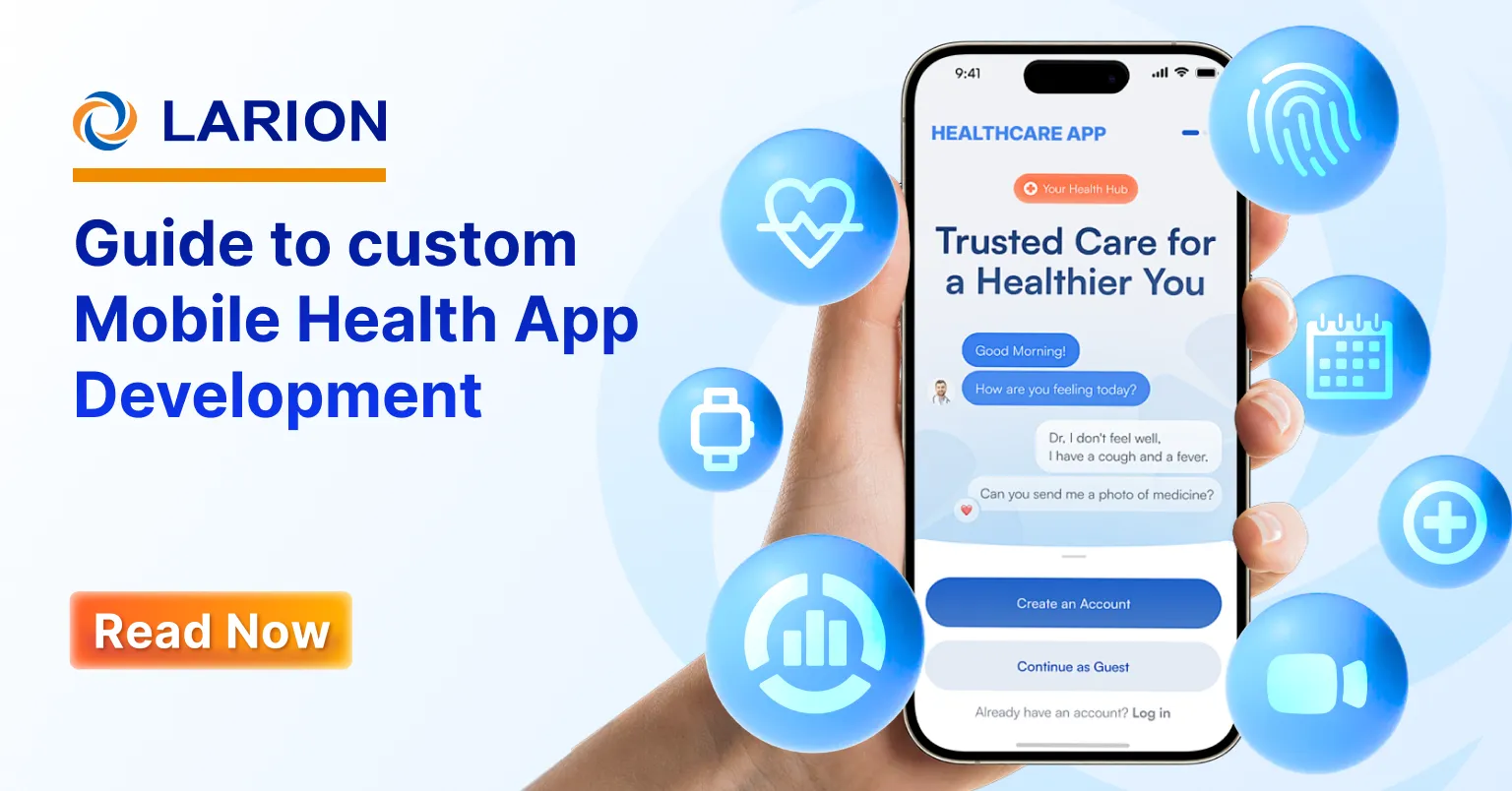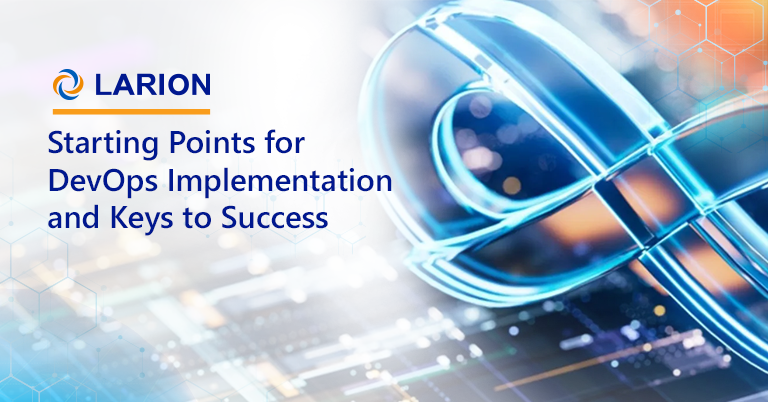
DevOps is not new, but its popularity has remained strong in recent years. Companies are actively adopting this approach in their IT departments, aiming for greater efficiency in software development and operations to accelerate the release of new products and respond to market changes. However, success is not guaranteed for everyone.
The difficulty may lie in the DevOps implementation plan. Today, we’ll explore how to assess your organization’s readiness for DevOps and outline the necessary process to ensure a successful implementation
Key factors to identify DevOps readiness
With a thorough assessment, you can clearly understand potential obstacles within the current system, identify areas for improvement and organizing the prioritized activities required to successfully implement embrace DevOps cultures
Several factors to considered when evaluating your enterprise DevOps readiness are:
Analyze your organizational culture
This includes gauging your organization’s current culture to pinpoint barriers to collaboration and communication between development and operations teams. Surveys, interviews, and focus groups with key stakeholders can be used to gather this information.
During a cultural assessment, consider asking the following key questions:
- How do development and operations teams currently collaborate?
- Are there any silos or obstacles to effective teamwork?
- How does your company approach feedback and ongoing improvement?
- Is there a unified understanding of business goals and objectives?
Using these insights, you can create tactics to overcome cultural hurdles to DevOps implementation. This might involve providing training for team members while making adjustments to organizational structures and processes.
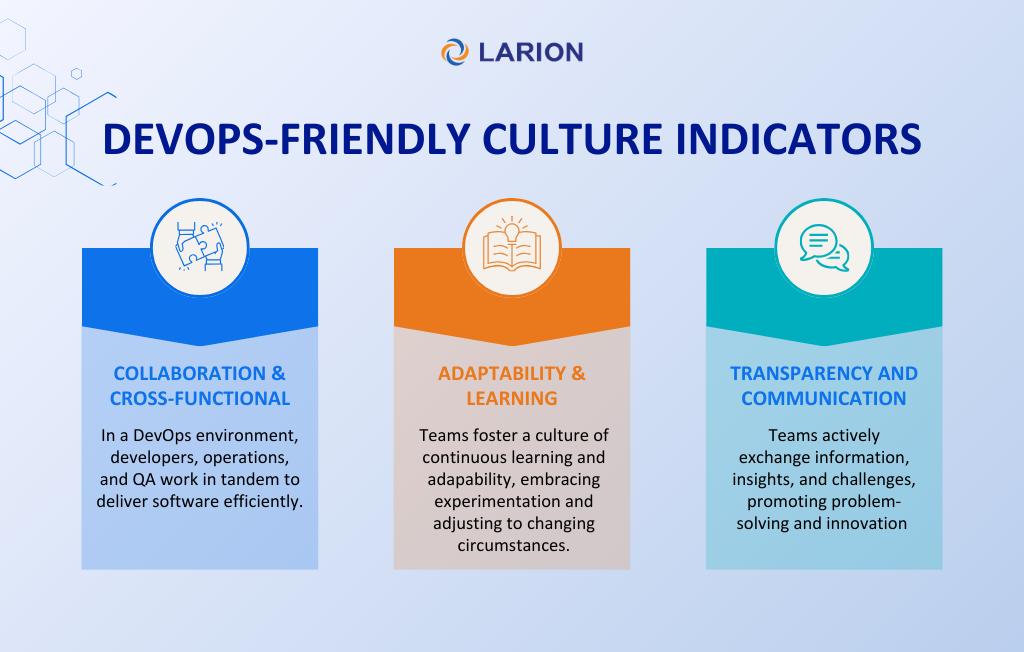
Process alignment assessment
Just as a powerful engine is ineffective without a proper transmission system, even the most skilled and motivated teams in a DevOps environment can struggle without well-aligned processes. DevOps depends on processes that facilitate seamless collaboration and quick delivery. These processes include, at a minimum: CI/CD and automated testing
It’s important to review the following areas:
- Are there any bottlenecks in your current processes that could be impeding rapid software delivery?
- How extensive is the automation in your processes, including integration, testing, and deployment?
- How efficient is your product testing across the development cycle?
Team skills
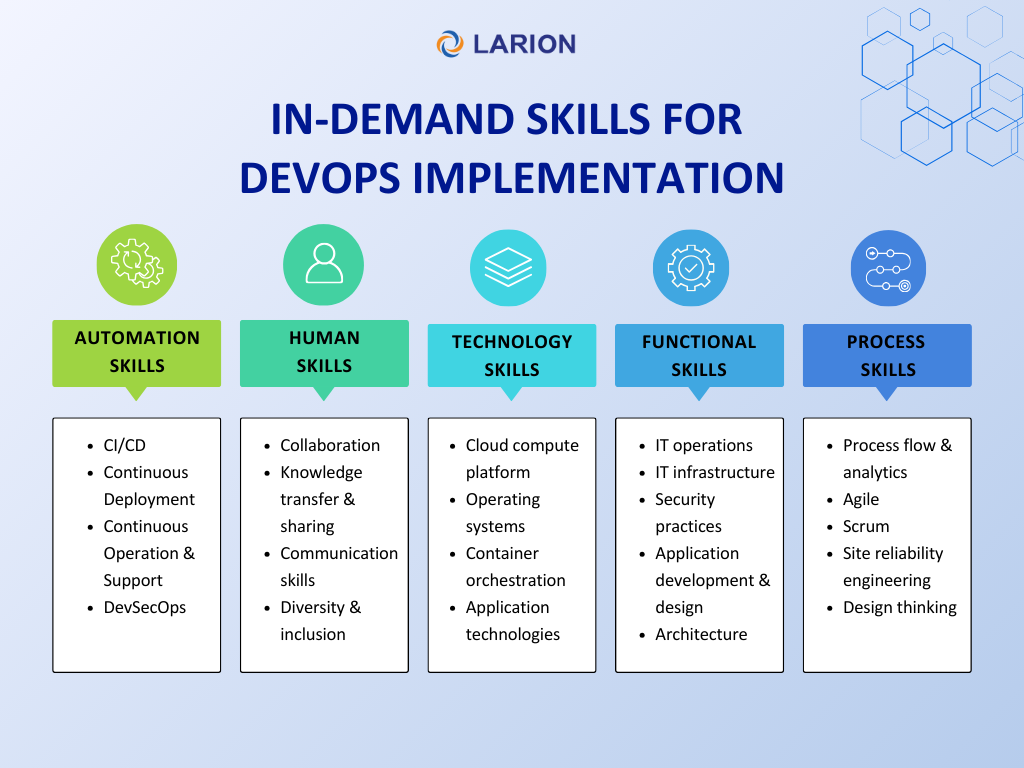
The skills and competencies of your teams are crucial to DevOps practices. Continuing with the automotive metaphor, these skills are the gears and mechanisms that propel your vehicle forward.
- How skilled is your team in automation and scripting languages?
- Infrastructure as Code (IaC): Is your team proficient in managing infrastructure through code using tools like Terraform and Ansible?
- CI/CD: Does your team understand and effectively implement CI/CD pipelines with tools such as Jenkins and Git?
- Containerization: How familiar is your team with containerization technologies like Docker and container orchestration tools like Kubernetes for managing and scaling applications?
- Security Awareness: Does your team have a strong grasp of security principles in a DevOps context to safeguard against breaches and ensure robust system security?
To adapt to this shift, organizations frequently need to invest in upskilling and reskilling their team members. Success often hinges on how quickly and effectively your team can learn and adapt to new skills. Success depends not only on acquiring these skills but also on how effectively they are integrated within the DevOps team structure, enabling teams to learn, adapt, and perform cohesively in a fast-evolving technological landscape.
Tools & technologies
Examine your current toolset and technology infrastructure to see if they can accommodate DevOps implementation. Evaluate whether there is a need for new tools or better integration of existing ones. Some of the key tools are Jenkins, Docker, Kubernetes, Ansible, etc.
- Are appropriate tools in place and effectively used for IaC, CI/CD, configuration management, containers and automated testing?
- How well do your current tools integrate with each other to support a seamless DevOps workflow?
- Are there any gaps in your toolchain that could hinder automation and collaboration across teams?
- What measures are in place to ensure that your tools and technologies are regularly updated and maintained?
6 steps of DevOps implementation roadmap
Once decide to adopt the method, you’ll need a step-by-step DevOps process to transition smoothly from traditional software development. Here’s a breakdown of the key steps involved.
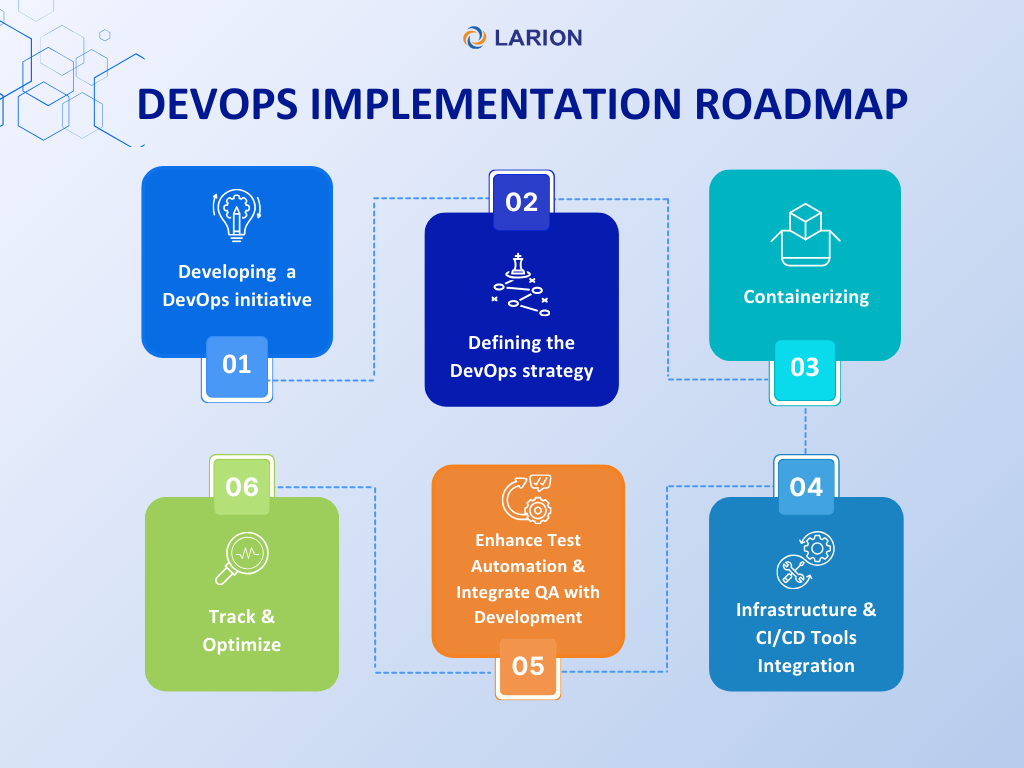
1. Planning the DevOps initiative
The first step in executing DevOps is aligning with top-level management in which a CIO or IT director takes charge of the initiative. This includes assessing the current processes, setting clear goals, allocating necessary resources and monitoring its execution to facilitate changes in development and operations with minimal disruptions to the operations
2. Establishing your DevOps strategy
For an effective DevOps strategy, the program manager should apply practices that enhance interdepartmental collaboration and facilitate new methods for software development, testing and infrastructure provisioning. Key practices comprise:
- Foster a collaborative DevOps environment: Bring together testing, development, operations and other related teams into a shared DevOps environment to promote a unified focus on common goals, outcomes and enhance understandings about each other’s roles and responsibilities
- Utilize IaC: This enables the swift provision of IT infrastructure to meet the developers and test engineers’ requests. DevOps practitioners can acquire new development infrastructure or testing with a single click, reducing human errors associated with Manual configuration
- Automate processes: Automate unit/UI testing, software building, deployment, integration, and release to quicken the entire development cycle.
3. Containerizing
Containers involve everything needed to operate an app, for instance, libraries, dependencies and configuration files. Employ containerization tools like Docker or Kubernetes address reliability issues that arise when software moves from development to testing and then to production.
By isolating containerized components from the overall IT infrastructure, containers ensure stable operation across different environments.
Additionally, as the application’s components (such as its database and front end) are distributed across multiple containers, the operations team can eliminate the need to rebuild the entire software when changes are made to individual microservices
4. Integration infrastructure with CI/CD tools
To streamline the process of establishing and managing the infrastructure that powers containerized applications, there should be an integration of infrastructure automation tools (like Kubernetes, Ansible, or Chef) and CI/CD tools (such as Jenkins, Bamboo, or GoCD).
For instance, Kubernetes is ideal for managing large infrastructures while Ansible is better suited for smaller setups in handling container orchestration, health monitoring, fault tolerance and rolling updates. Jenkins, on the other hand, is used to create, test, and deploy new builds into Kubernetes.
Integrating these tools ensures efficient configuration management and deployment, resulting in a seamless containerized application workflow.
5. Optimize test automation & align QA with DevOps
Sufficient automation testing is significant to accomplish faster delivery with DevOps. Nevertheless, some tests may be better suited for manual execution. For evaluation, you should consider the frequency of each test and examine whether automating it is worthwhile. For example, usability, security and exploratory testing should still be conducted manually.
Furthermore, it’s advised to align QA practices with development to foster a collaborative approach to quality. This alignment facilitates early error detection and enables developers to address issues before the next release.
6. Monitor and enhance
Application performance monitoring (APM) gives DevOps teams visibility into performance issues like slow response times, memory leaks, and runtime errors which may surface through application server monitoring, user experience monitoring, etc.
This allows development teams to identify, prioritize, and isolate app defects before they reach end users. It also helps in swiftly discovering the root causes of errors using specialized monitoring tools, such as Zabbix, Nagios, or Prometheus, which can be customized for specific applications.
Common misconception about DevOps implementation you can avoid
As DevOps gains popularity, misconceptions about this approach are also on the rise. Prior to implementing the change to DevOps within your organization, it’s important to have a clear understanding of what DevOps truly involves.
- DevOps is a one-time implementation: DevOps is an ongoing process that requires continuous improvement. It’s not a one-time event but a cultural shift that needs to be maintained and adapted
- DevOps is all about toolset: While tools like Ansible, Selenium, Docker, Kubernetes, and Octopus are essential for efficient DevOps implementation, adopting the approach requires more than just technical proficiency. Teams must also embrace new practices such as continuous testing and CI/CD to supplement the employment
- DevOps relies solely on automation: Automation is a crucial aspect of DevOps, encompassing various forms such as IaC, CI/CD pipelines, and automated testing. However, the true essence of DevOps lies in cultivating a culture of collaboration, communication, and continuous feedback between development and operations teams. While automation enhances these principles by enabling faster and more reliable software delivery, it alone will not result in the desired outcomes if not paired with a cultural shift.
Get started with DevOps effectively
A successful DevOps implementation begins with thorough preparation, starting with an evaluation of your company’s readiness. Key elements to consider include organizational culture, process alignment, team skills, and the tools and technologies in use. This assessment helps identify strengths and weaknesses in your current practices and allows you to develop an improvement plan that aligns with the DevOps environment. Once these areas are defined, you can follow a guided 6-step roadmap to effectively implement DevOps in your organization.
However, DevOps is a one-size-fits-all approach. Each organization has unique needs, challenges, and goals that require a customized DevOps strategy. The successful implementation of DevOps depends on the specific context, culture, and requirements of the organization, as well as the maturity of its existing processes and technology.
With over 20 years of experience in implementing DevOps practices across companies of all sizes, our certified professionals excel in creating customized strategies that address your specific challenges, focusing on both the technical and cultural aspects of DevOps to ensure a comprehensive transformation. Our approach provides end-to-end support, from the initial assessment and planning stages to execution and continuous improvement. Book a consultation with us today!
